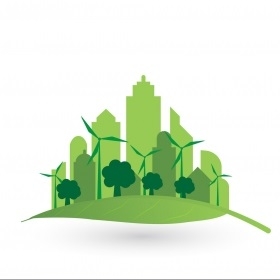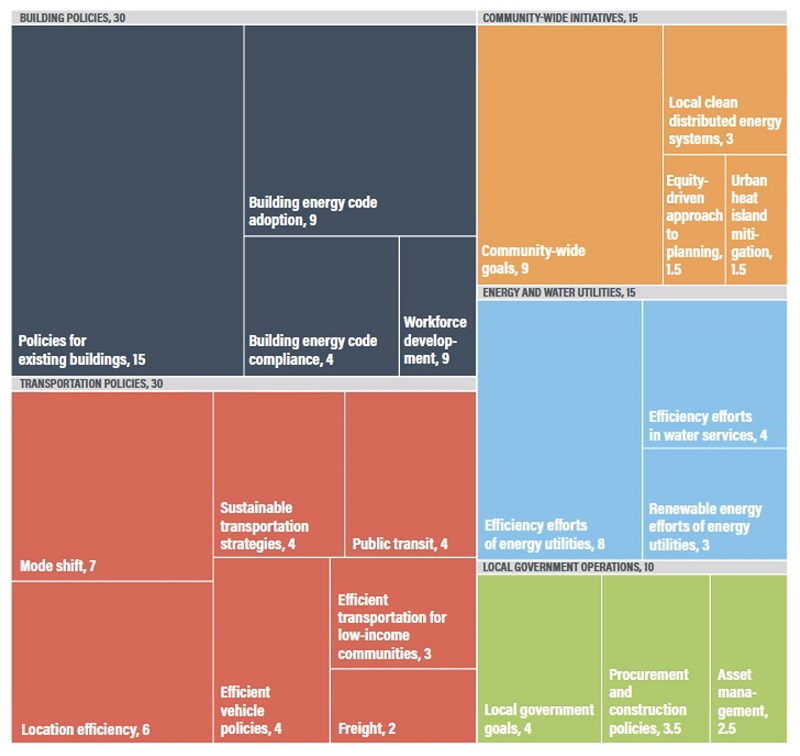

By Guest Contributor | Wed, October 21, 20
The American Council for an Energy-Efficient Economy (ACEEE) produces an annual scorecard ranking 100 major cities across the United States on their clean energy efforts. The cities are scored on their transition and current work towards implementing energy efficiency programs, using renewable energy, and deploying these efforts equitably across all populations. This valuable resource from ACEEE helps cities assess their progress against peers from across the country and provides a general understanding of what further action is needed.
Community Action Planning for Energy Efficiency (CAPEE) is an online resource created by NEEP to assist municipalities with their energy efficiency priorities, projects, and goals. CAPEE provides recommendations in a simple, yet actionable, format so communities can make progress on their clean energy journeys. The information contained within the CAPEE tool is a great resource for cities seeking to make improvements on ACEEE’s City Clean Energy Scorecard ranking.
The ACEEE scorecard is an extensive test of what it takes to be an energy efficient city. The five major areas of grading are: (1) local government operations, (2) community-wide incentives, (3) building policies, (4) energy and water utilities, and (5) transportation policies. These broad categories are then further broken down into subsections to create a very specific and equitable scorecard. Each city is thoroughly tested against the criteria in each category to determine their score and standing within the 100 cities. In the ACEEE diagram below , all categories are listed and shown to approximate scale of how much they impact the overall score.

Year-to-year progress of cities is drastically different among them all. Only 20 of the 100 cities are on track to meet their climate goals, and although that is nine more than last year, there are still 80 cities either falling behind on their goals or not having any to begin with. In the current standings, Boston is tied for second place with Seattle. Boston has implemented new parking regulations for more accessible and favorable parking for renewable vehicles and this major plan has helped the city stay close to the top of the rankings. In this way, Boston can be a role model for other cities in the Northeast.
NEEP’s CAPEE tool includes 11 fact sheets to assist in reaching climate and energy goals. The resources are on benchmarking, energy code compliance, energy committees, energy master plans, green building standards, high performance buildings, LED street lights, professional development, schools, transportation, and wastewater. Clearly, there is a lot of overlap between what CAPEE supplies and what ACEEE scores on.
Although Boston is proudly ranked second in the country on the ACEEE scorecard, it’s important to focus on the mid-ranked cities that have potential to improve and can be supported through current and future CAPEE resources. Hartford, Connecticut (23), Providence, Rhode Island (24), and Springfield, Massachusetts (43) could all use CAPEE to help improve their scores. Although Hartford and Providence are ranked so closely together, there are major differences in how they got their score and how they can improve. See the chart below for a comparison of these three cities. The chart also provides the connection between ACEEE’s scorecards and the CAPEE fact sheets where applicable.
| ACEEE Scorecard Category | Hartford, CT | Providence, RI | Springfield, MA | CAPEE Fact Sheet |
| Climate and Energy Goals | 0 | 1.5 | 0 | Energy Committee |
| Procurement and Construction Policies | 1.5 | 3 | 0 | LED Street Lights, Transportation |
| Asset Management | 1.5 | 2.5 | 0 | Benchmarking, SEM Water and Management |
| Climate and Energy Goals | 0 | 2 | 1.5 | Energy Master Plan, Energy Committee |
| Energy Data Reporting | 1 | 1 | 1 | Benchmarking |
| Equity-Driven Planning | 1 | 1.5 | 1 | Energy Master Plan |
| Distributed Energy systems | 2 | 0 | 0.5 | N/A |
| Urban heat Island Mitigation | 1.5 | 1.5 | 0.5 | N/A |
| Building Energy Code Adoption | 5 | 1 | 6 | Energy Code Compliance |
| Code Compliance and Enforcement | 3 | 1 | 2 | Energy Code Compliance |
| Existing Buildings | 1.5 | 0.5 | 0 | Energy Code Compliance, Benchmarking, Green Building Standard |
| Workforce Development | 2 | 1 | 0 | Professional Development |
| Efficiency Efforts | 6 | 8 | 6.5 | N/A |
| Renewable Efforts | 1 | 1.5 | 0.5 | N/A |
| Water Services | 2.5 | 2 | 0 | SEM Water and Wastewater |
| Sustainable Transportation | 1 | 4 | 1 | Transportation |
| Location Efficiency | 5 | 3 | 1.5 | Transportation |
| Mode Shift | 2 | 3.5 | 2 | Transportation |
| Public Transit | 2.5 | 1.5 | 1.5 | N/A |
| Efficient Vehicles | 2 | 2 | 1 | Transportation |
| Freight | 0 | 0 | 0 | Transportation |
| Equitable Transportation | 2 | 2 | 1 | N/A |
As noted above, there are a few key areas where no overlap exists between CAPEE and the ACEEE City Scorecard. NEEP is currently working on a strategic electrification fact sheet that will assist communities with areas such as electric efficiency and natural gas efficiency, further reducing the gap between these two resources. Additionally, in 2021, NEEP will be looking more closely at how to provide equitable approaches for energy efficiency initiatives within communities so that all populations are able to take advantage of the opportunities provided by energy efficiency.


